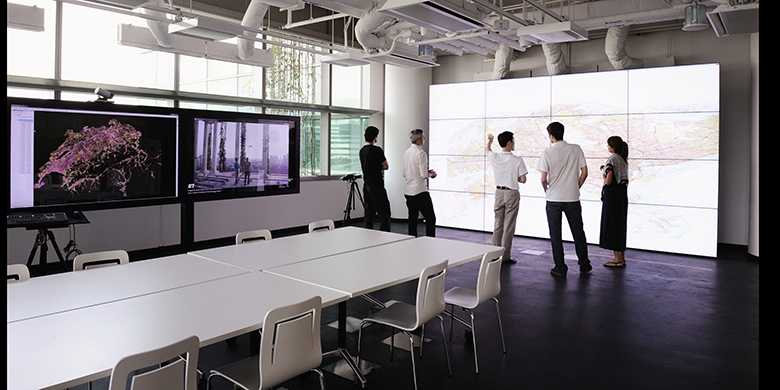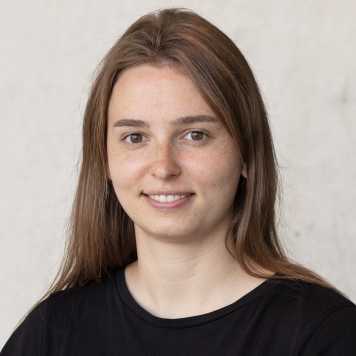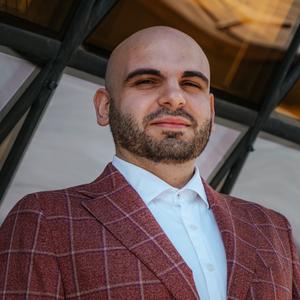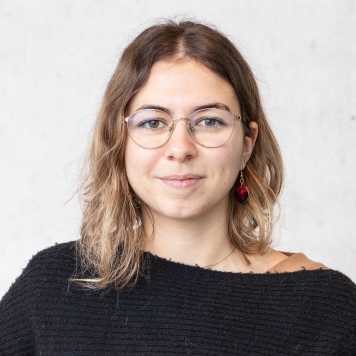
FHT PhD seminars: Reviewing risk, rehabilitation and recovery
18 Oct | In this round of PhD seminars, four researchers will share ongoing work in assistive technologies and assessment of recovery after stroke, and identifying gait quality for fall prevention.
FHT PhD Seminars
Join us for the latest updates from our promosing researchers
Date: Wed, 18 Oct
Time: 3-5pm (SGT)
Venue: Value Lab Asia, L6 CREATE Tower
Zoom link: external page https://ethz.zoom.us/j/67708104618
Presenters: Natalie Tanczak | Kai Zhe Tan | Tengiz Samkharadze | Eva Josse
This series of events brings together FHT researchers interested in the application of evidence-based digital health technology concept to transform the healthcare system towards health by prevention and a community-based and patient-centric model, leveraging on scalable digital technologies. These seminars will be chaired by Dr Rita Cheng and Dr Jacqueline Mair.
Chaired by Dr. Rita Cheng (3-3.50 pm)

Natalie Tanczak, PhD Researcher
Assistive Technologies for Functional Recovery in Persons after Stroke
Six months after stroke, about 60% of individuals continue to suffer from upper limb impairments and struggle with activities of daily living. Studies have shown that improvements in either arm or hand function positively contribute to societal participation and the overall improvement of health-related quality of life. Assistive technologies, specifically hand exoskeletons, can help facilitate upper limb usage and allow users to regain independence in their daily lives. The RELab tenoexo is an example of a state-of-the-art robotic hand orthosis. Its sleek and lightweight construction can support persons after stroke with grasping tasks, assisting with flexion and extension of their digits. Through a continuum of care approach, we will measure the impact of deploying such technologies in the homes of individuals with chronic post-stroke upper limb impairments. With increased usage of the impaired limb, particularly with functionally relevant movements, we will investigate if there is remaining potential for recovery, even long after stroke.

Kai Zhe Tan, PhD Researcher
Identifying gait parameters to assess fall risk among the elderly in Singapore
Falling poses a major threat to the steadily growing population of the elderly in Singapore. A major challenge in the prevention of falls is the identification of individuals who are at risk of falling owing to an unstable gait. Assessment of dynamic stability and gait variability via biomechanical measures of foot kinematics (gait parameters) are essential to quantify gait quality. ZurichMOVE (an inertial measurement unit-based wearable sensor) provides a viable option for quantitative evaluation of gait quality in community setting. Such kinematic measures are crucial for accurate fall risk assessment. The objectives of the PhD project are to: (1) identify and extract gait parameters from overground walk test data collected using ZurichMOVE in clinical and community settings, (2) apply theories of dynamical system to establish and validate novel measures of gait stability and variability (3) correlate these measures with fall histories and prospective falls, and (4) identify and classify gait parameters that are relevant for intervention for fall prevention.
Chaired by Dr. Jacqueline Mair (4-4.50 pm):

Tengiz Samkharadze, PhD Researcher
Early health technology assessment of stroke technology-assisted rehabilitation for upper limb (STAR-UP)
Evaluation of clinical benefits and costs associated with health care interventions is essential to facilitate informed decision-making by health practitioners and policymakers. A thorough health technology assessment (HTA) bolsters the adoption of health care technologies in clinical practice. However, for emerging rehabilitation technologies, the evidence is scarce. Therefore, early HTA could be considered an appropriate evaluation method for such innovations. The project’s core objective is to conduct an early HTA of a homebased RehabGym, a suite of complementary and intelligent technologies for enhanced stroke technology-assisted rehabilitation for upper limb (STARUP). We will initiate evaluation with a mixed-method study, using focus group discussions or semi-structured interviews, to unravel the barriers and facilitators to RehabGym’s home-based application. Simultaneously, a feasibility study will be performed to demonstrate that the clinical effectiveness of RehabGym is comparable to traditional rehabilitative interventions. Finally, to provide a complete picture, we will estimate the costs associated with RehabGym use and evaluate its potential impact on the health system through economic modelling. With all this multifaceted data, we will explore the commercialisation potential of RehabGym and develop a setting-specific guideline for the novel STAR-UP concept by engaging the key stakeholders from the post-stroke rehabilitation domain.

Eva Josse, PhD Researcher
Tracking and predicting the evolution of upper limb recovery post-stroke with digital and clinical health metrics
25% of adults older than 25 will have a stroke in their lifetime. Despite being a leading cause of disability, the post-stroke upper limb recovery timeframe is mostly unknown, and the large variability in recovery profiles is not well understood. Indeed, existing datasets fail to capture the multi-dimensional construct of stroke recovery. Moreover, although upper limb disabilities penalize daily tasks, conventional assessments hardly represent free conditions and are bound to predefined tasks in controlled environments. With a limited understanding of post-stroke recovery, it is still challenging to predict rehabilitation outcomes and identify the underlying factors influencing therapy to define the optimal therapy programme.
Hence, in this thesis, I want to 1) Deepen our understanding of long-term post-stroke upper limb sensorimotor and functional recovery thanks to a unique set of features and assessments. Indeed, better comprehension of upper limb disabilities post-stroke, especially upper limb use in daily life, should help me to secondly 2) Identify the main factors influencing post-stroke recovery and subgroups of patients to predict upper limb recovery.
To this end, my colleagues and I are conducting a longitudinal study to track and predict upper limb post-stroke recovery and gather a rich multi-modal database of technology-aided assessments, clinical assessments, quality of life, and neurophysiological markers. The study is taking place in Singapore, where the incidence of stroke is increasing due to the aging of the population. Up to 300 patients will be assessed at several time points during inpatient and outpatient phases for a maximum of 2 years post-stroke. Participants wear motion trackers for 48 hours to record daily use of the upper limbs. We also evaluate the control and quality of arm movements, as well as proprioception and motor functions of the index finger, with innovative robotic devices developed by the Rehabilitation Engineering Laboratory.
This research will contribute to fundamental challenges in stroke rehabilitation. It aims to evaluate patients’ potential for recovery, with the hope of supporting healthcare practitioners in developing data-driven rehabilitation strategies. We wish to support therapy decisions with data-driven tools and assess long-term recovery. We focus on Asian populations, as they are underrepresented in medical studies. Indeed, we expect our targeted population to present different functional courses of recovery compared to what has been mainly reported on Caucasians.